
Animal Biotelemetry
Scope & Guideline
Transforming Animal Behavior Research Through Bioinformatics
Introduction
Aims and Scopes
- Innovative Telemetry Techniques:
The journal emphasizes the development and validation of novel telemetry devices and methods, such as acoustic tags, GPS, and accelerometers, which enhance the understanding of animal movements and behaviors. - Behavioral Ecology and Conservation:
Research often focuses on how telemetry data can inform conservation strategies by providing insights into animal behavior, habitat use, and interactions with their environment. - Interdisciplinary Approaches:
The journal promotes interdisciplinary research, integrating biology, engineering, and environmental science to address complex ecological questions. - Real-world Applications:
Studies published in the journal frequently highlight practical applications of telemetry in wildlife management, conservation efforts, and ecological monitoring. - Data Analysis and Methodology:
A significant emphasis is placed on developing robust analytical frameworks and software tools that facilitate the interpretation of telemetry data, ensuring high-quality and reproducible results.
Trending and Emerging
- Automated and Remote Sensing Technologies:
There is a surge in the use of automated telemetry systems, such as satellite and radio telemetry, which allow for continuous monitoring of wildlife without human interference. - Data Integration and Machine Learning:
The application of machine learning techniques to analyze telemetry data is trending, facilitating the extraction of complex patterns and behaviors from large datasets. - Ecological and Environmental Influences:
Emerging research is increasingly focused on how environmental factors affect animal movement and behavior, highlighting the interplay between ecology and telemetry. - Non-Invasive Monitoring Techniques:
There is growing interest in non-invasive methods for monitoring animal behavior, such as using bio-loggers and sensor attachments that minimize stress and impact on wildlife. - Multi-Disciplinary Collaborations:
Collaborative studies that integrate various scientific disciplines, such as engineering, biology, and environmental science, are on the rise, reflecting a holistic approach to wildlife monitoring.
Declining or Waning
- Traditional Tagging Methods:
Older methods of animal tracking, such as basic radio telemetry, are becoming less common as newer, more efficient technologies and analytical techniques are developed. - Generalized Behavioral Studies:
There is a noticeable decline in studies that aim to describe general animal behaviors without specific telemetry applications; the focus has shifted towards more precise and detailed analyses. - Single-Species Studies:
Research focusing solely on individual species tracking is waning, as there is a growing trend towards multi-species studies that provide broader ecological insights. - Static Habitat Studies:
The use of telemetry to study static habitats or sedentary species is decreasing, as researchers increasingly seek dynamic interactions and movements across various ecosystems.
Similar Journals

CALIFORNIA FISH AND GAME
Exploring California's Aquatic WondersCalifornia Fish and Game is a prominent journal dedicated to the fields of Animal Science and Aquatic Science, published by the California Fish and Game Editor. With its roots extending back to 1979, the journal has served as a vital platform for disseminating research focused on the wildlife and aquatic ecosystems of California and beyond. Recognized within the Q4 quartile for both Animal Science and Zoology and Aquatic Science, it provides critical insights and scholarly contributions, despite its comparative rankings within the respective categories. The journal, with an ISSN of 0008-1078 and an E-ISSN of 2331-0405, offers an invaluable resource for researchers, professionals, and students alike, looking to deepen their understanding of California's rich biodiversity and ecological challenges. For those interested in open access options, further details can be reviewed through the journal's platform. By fostering a community of inquiry, California Fish and Game plays an essential role in advancing knowledge and conservation efforts in the fields of interest.

Animals
Empowering animal research through open access collaboration.Animals is an esteemed open-access journal published by MDPI, focusing on the dynamic fields of Animal Science and Zoology, as well as Veterinary Sciences. Established in 2011, it has quickly garnered a prominent reputation, achieving Q1 rankings in both Animal Science and Veterinary (Miscellaneous) categories in 2023. With an impressive Scopus ranking placing it in the top 15% of Veterinary journals and the top 13% in Animal Science, Animals serves as a vital platform for researchers and professionals to disseminate and share innovative studies that advance knowledge in animal biology, husbandry, welfare, and veterinary care. By promoting open access since its inception, the journal ensures unrestricted availability of cutting-edge research to a global audience, fostering collaboration and inspiring further studies in the field. Located in the heart of Switzerland, at St. Alban-Anlage 66, Basel, Animals is essential for anyone dedicated to understanding and enhancing the welfare and management of animals across various disciplines.
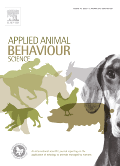
APPLIED ANIMAL BEHAVIOUR SCIENCE
Elevating the discourse in animal behavior science.APPLIED ANIMAL BEHAVIOUR SCIENCE, published by Elsevier, stands as a leading academic journal in the domains of Animal Science and Zoology, with a commendable impact factor reflecting its significance in the field. Established in 1984, this esteemed journal is committed to disseminating cutting-edge research that enhances understanding of animal behavior, welfare, and management practices. With an H-Index indicative of its influence and a ranking of #85/490 in Scopus for Agricultural and Biological Sciences, this journal is a pivotal resource for experts focusing on both companion and food animals. While it currently operates under a subscription model, it continues to serve as a robust platform for stimulating discourse and advancing knowledge through high-quality peer-reviewed articles. The journal's reach is global, and it plays a vital role in guiding future research and policy in animal behavior science across various disciplines.
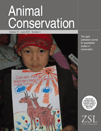
ANIMAL CONSERVATION
Innovating Conservation Strategies for Wildlife and Habitats.Animal Conservation is a prestigious journal that serves as a vital platform for the dissemination of research dedicated to the preservation of wildlife and habitats. Published by Wiley, this journal has established a significant presence in the fields of Ecology and Nature and Landscape Conservation, holding a distinguished Q1 category ranking for both in 2023. With an impressive Scopus rank of #25 in the realm of environmental science, it caters to a global audience keen on understanding and addressing pressing conservation issues. The journal provides researchers, professionals, and students with high-quality, peer-reviewed articles that explore innovative methods and strategies in animal conservation. With its continuous publication since 1998, encompassing a comprehensive range of topics, Animal Conservation is indispensable for anyone aiming to make impactful contributions to the field of ecology and conservation biology.

ACTA ETHOLOGICA
Shaping the Future of Ethological ResearchACTA ETHOLOGICA, published by Springer Heidelberg, is a leading journal in the fields of Animal Science and Zoology, as well as Ecology, Evolution, Behavior, and Systematics. With an ISSN of 0873-9749 and an E-ISSN of 1437-9546, this journal has established itself as a notable platform for innovative research and review articles since its inception in 1998. As of 2023, it holds a Category Quartile of Q3 in both its primary categories, showcasing its commitment to advancing knowledge within these scientific domains. The journal aims to facilitate the dissemination of cutting-edge research on animal behavior and ecology, fostering collaboration among researchers, professionals, and students. While it does not currently offer Open Access options, ACTA ETHOLOGICA remains crucial for those looking to stay informed about the latest developments and trends in ethology. For inquiries, the journal's editorial office is located at Tiergartenstraße 17, D-69121 Heidelberg, Germany.
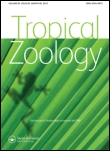
TROPICAL ZOOLOGY
Unveiling the mysteries of tropical animal life.TROPICAL ZOOLOGY is a prestigious academic journal dedicated to advancing knowledge and research in the fields of animal science, zoology, and ecology. Published by PAGEPRESS PUBL, this journal has been an integral part of the scientific community since its inception in 1988, providing a platform for the dissemination of innovative research and discoveries related to tropical wildlife and ecosystems. With an impact factor placing it in the Q3 category for both Animal Science and Zoology, as well as Ecology, Evolution, Behavior, and Systematics, it ranks among the noteworthy publications in these fields. Researchers, professionals, and students will find that TROPICAL ZOOLOGY is an essential resource for the latest findings, fostering a deeper understanding of biodiversity and conservation in tropical environments. The journal is based in the United Kingdom, with additional administrative support from MEDIGROUP in Italy, ensuring a broad international perspective and reach. While it does not operate under an open access model, it remains committed to high-quality peer-reviewed content that contributes significantly to the understanding of tropical ecosystems and the species that inhabit them.
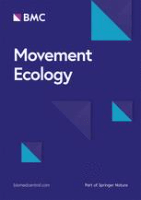
Movement Ecology
Innovating insights into the dynamics of movement and behavior.Movement Ecology is a premier peer-reviewed journal published by BMC, dedicated to advancing knowledge in the vibrant field of ecology, evolution, behavior, and systematics. Established in 2013, this open-access journal provides a platform for the dissemination of innovative research on animal movement and its ecological implications, making critical findings available to a global audience since 2014. With its impressive Q1 ranking in the 2023 category of Ecology, Evolution, Behavior, and Systematics and a commendable Scopus ranking in the 87th percentile, it serves as a leading source of information for researchers, professionals, and students alike. The journal aims to foster interdisciplinary collaboration and promote the application of movement ecology to conservation and management practices, significantly impacting biodiversity research. Located in the vibrant city of London, Movement Ecology continues to shape the landscape of ecological research through its commitment to high standards and accessibility.
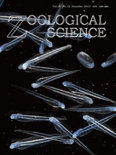
ZOOLOGICAL SCIENCE
Bridging Theory and Practice in Zoological ResearchZoological Science, published by the Zoological Society of Japan, is a leading journal dedicated to the fields of animal science and zoology. With its ISSN 0289-0003, this respected publication has established itself as a prominent source of scientific research, attaining a commendable Q2 ranking in the 2023 category of Animal Science and Zoology. Spanning over three decades, from 1992 to 2024, the journal offers a valuable platform for scholarly articles that explore various aspects of zoology, including ecology, behavior, and evolutionary biology. Although it operates under a traditional subscription model, its contributions are supported by a robust community of researchers and professionals who value its insights. The journal strives to foster academic discourse and insights that drive understanding and conservation of wildlife, making it an essential resource for students and established experts alike. The publishing headquarters located in Tokyo, Japan, further enhances its international reach and influence in zoological studies.

ZOOLOGICHESKY ZHURNAL
Advancing the frontiers of zoological knowledge since 1950.Zoologichesky Zhurnal, a prominent journal in the field of Ecology, Evolution, Behavior and Systematics, has been a vital publication since its inception in 1950. Published by MAIK Nauka-Interperiodica in the Russian Federation, this journal has established a notable reputation in disseminating scientific research and advancing knowledge in zoology. With its coverage spanning from 1950 to 2023, and a specific convergent focus during 1982-1983, this journal contributes significantly to the ecological and evolutionary sciences, even though it currently holds a Q4 classification in the 2023 category quartiles, indicating its niche positioning among peers. Researchers and students engaged in the study of biological sciences, particularly those interested in the dynamics of ecosystems, behavior of species, and evolutionary processes, will find valuable insights and original research articles within its pages. While access to this esteemed journal is not open, it remains an essential resource for those seeking to deepen their understanding of zoological sciences.
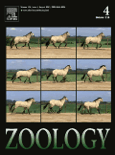
ZOOLOGY
Exploring innovative insights in zoology.ZOOLOGY, an esteemed journal published by Elsevier GmbH, stands at the forefront of research in the Animal Science and Zoology fields. With a notable impact factor and recognized as a Q1 category journal in its discipline, ZOOLOGY is highly regarded among researchers, ranking #98 out of 490 in Scopus rankings. Founded in 1994 and continuing through to 2024, the journal aims to publish cutting-edge, peer-reviewed articles that contribute significantly to the understanding of zoological sciences. Based in Munich, Germany, ZOOLOGY provides both subscription and open access options, ensuring that influential research reaches a wider audience. It serves as an essential platform for disseminating innovative findings, connecting scholars globally, and fostering interdisciplinary collaboration to advance zoological knowledge.